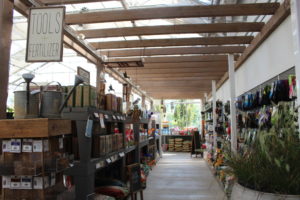
It’s All About Making Choices
The fall months are filled with both reflection on what transpired in the peak months of last spring and early fall, and looking forward with anticipation as we begin thinking about 2022. And it’s difficult to impossible to begin planning for next spring without truly analyzing the good, the bad and the ugly from last year — what worked and didn’t work and, most importantly, understanding why. What can we learn from what we did (and didn’t do!), what might you think about doing differently, and what changes should you consider for next season?
Like life, business success or failure is the cumulative result of choices we make, and planning is really nothing more than envisioning what the environments — climate, economic, financial, social, etc. — will be and then making choices from the many options available to us, choices that will allow us to achieve whatever goals and objectives we’ve established.
But while in the past our choices were clearly defined … this or that, black or white … operating under the pressures and challenges of the COVID-19 pandemic made our choices more fluid and less defined. For example, many companies and schools offered face-to-face interaction or remote/virtual without physical contact; but these weren’t absolute choices because many also offered hybrid options, with a combination of the two, adding another dimension and complexity to the choice/decision process.
Analyzing Your Choices
If you take the time to honestly assess the choices you made last year to identify what worked and what didn’t, consider any new initiatives/strategies you want to pursue, and crystal ball what next year’s operating environment will look like, you’ve established a pretty good starting point for planning 2022.
Now, many of you are seasoned veterans in planning, performing this activity almost instinctively and intuitively based on your experience, reviewing your options and making choices without even consciously thinking about them, and you’re still around, so you must be doing something right!
That said, you might find some value in stepping back from the way you’re currently planning and taking a more methodical approach in identifying all the options available, challenging past choices, and making the best choices possible for 2022; this process will offer a different perspective that may provide significant benefit to your bottom line.
At the end of the day, you’ll be more committed and confident in the choices you’ve made because you defended your choice/decision against all the other options. And since you only have a finite amount of resources (money, time, effort, people and space) to invest in your business, this approach will help ensure that all the choices you make will, including your resource investments, be the very best for achieving your financial goals and supporting your company’s mission and vision.
A Hierarchy of Choices
What worked for me in developing a decision table was identifying a hierarchy of choices, starting at the highest, broadest levels, and then drilling down to the lowest levels. For example, when reviewing assortments, looking at the annual category, drill down to flowering and edible, then down to varieties and container sizes, listing as much detail as possible.
Next, using 2021 sales and profit data, identify the highest sales and the highest net profit (gross margin less markdowns and shrink) contributors. You should readily see items that didn’t perform well that are candidates to be dropped from your inventories. The next step is to list potential additions, new items that you found at trade shows and in talking with your reps.
After you develop this type of decision table for every major category (annuals, perennials, ornamental shrubs, fruit/shade trees, soils, pottery, decorative mulches, hardscape materials, etc.), you should have a pretty good tool for identifying growth categories and trends. You should also know if there are any new categories of products you want to consider adding to your assortments.
Since your stores don’t have rubber walls, for any category you want to add or expand, you’ll have to identify other categories that will have to decrease space or skinny up inventory levels. And remember that the choices you make will have to support the overall financial goals and company mission and vision, and most importantly, make sense to your customers.
Now from your expanded list/decision tree, you can begin to make rational and conscious choices to build your assortments. Once done, apply your retails/costs and unit estimates to generate a weighted sales and profit matrix that might need some adjustments to achieve your sales and profit goals.
Is this a more time-consuming and detailed process than what most of us use? Absolutely. But it’s the only way to fully consider all the options and possibilities and force you to make intelligent, conscious choices to meet your objectives.
I’m constantly amazed that most of us spend more time considering and making choices that affect our businesses than we spend analyzing the choices in our personal lives, yet the rash, often snap, personal decisions we make and the implications of them can be long-lasting and potentially non-reversible.
Some long-term choices define our future life paths; consider that 17-year-old kid graduating from high school and thinking about his next steps — college, joining the military, going to trade school or getting an hourly wage job — major choices that will potentially define a life path. Or the college kid who makes the choice to go out for a few beers instead of studying for the mid-term exam tomorrow — a choice that may not have long-term consequences, but still potentially risky.
The choices one makes often influences attitudes and behaviors; you can make a conscious choice to start your day with an optimistic attitude geared to achievement, or a pessimistic attitude of skating through the day, thinking doom and gloom. And don’t underestimate the impact your choices have on others; as a leader, your choice of optimism or pessimism is easily seen and embraced by your team at work — your choices set the tone for their attitudes and behaviors.


















 Videos
Videos





